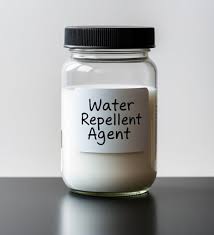Description
The Soft Truth About Fabric Softeners: Benefits, Drawbacks, and Alternatives
For generations, fabric softeners have promised fluffy towels, static-free clothes, and a pleasant scent lingering on our laundry. But are these promises worth the potential downsides? This article delves into the world of fabric softeners, exploring their benefits, drawbacks, and offering some eco-friendly and effective alternatives.
The Allure of Softness: What Fabric Softeners Do
Fabric softeners are designed to make fabrics feel softer and smoother. They achieve this by depositing a thin layer of lubricating chemicals onto the fibers of your clothes. These chemicals, typically positively charged quaternary ammonium compounds (often referred to as “quats”) or silicone-based emulsions, neutralize the negative charge that often develops on fabrics during washing, reducing static cling.
Here’s a breakdown of the key benefits often associated with fabric softeners:
- Softer Fabrics: The primary selling point! Softeners coat fibers, creating a smoother, more luxurious feel.
- Reduced Static Cling: The lubricating effect minimizes static electricity buildup, preventing clothes from clinging together.
- Wrinkle Reduction: Some softeners help to relax fibers, reducing wrinkles and making ironing easier.
- Pleasant Scent: Many softeners contain fragrances that leave clothes smelling fresh and clean.
- Easier Ironing: By smoothing out the fabric, ironing can become less tedious.
The Not-So-Soft Truth: Potential Drawbacks of Fabric Softeners
While the benefits seem appealing, there are several drawbacks associated with fabric softeners that are worth considering:
- Chemical Concerns: Many fabric softeners contain chemicals like quats, phthalates, and synthetic fragrances, which can be irritating to the skin, especially for those with sensitivities or allergies. Some studies have also raised concerns about the environmental impact of these chemicals.
- Reduced Absorbency: The coating left by fabric softeners can reduce the absorbency of towels and other absorbent fabrics. Over time, towels can become less effective at drying.
- Reduced Flame Retardancy: Softeners can interfere with the flame retardant properties of children’s sleepwear and other fabrics designed for safety.
- Damage to Certain Fabrics: Softeners can damage certain types of fabrics, such as moisture-wicking athletic wear, by clogging the pores and reducing their effectiveness. They can also weaken elastic fibers over time.
- Buildup and Residue: Over time, fabric softener can build up on your washing machine drum and internal components, leading to a greasy residue and potentially affecting the machine’s performance.
- Environmental Impact: The chemicals in fabric softeners can persist in the environment, potentially harming aquatic life and contributing to water pollution.
- Cost: Fabric softener adds to the overall cost of doing laundry.
Navigating the Softening Landscape: Exploring Alternatives
If you’re concerned about the potential drawbacks of traditional fabric softeners, there are several effective and eco-friendly alternatives to consider:
- Vinegar: A natural and inexpensive option! Add 1/2 cup of white vinegar to the rinse cycle. It acts as a natural fabric softener, helps to remove detergent residue, and even brightens colors. Don’t worry, the vinegar smell disappears as the clothes dry.
- Baking Soda: Adding 1/2 cup of baking soda to the wash cycle can help to soften fabrics and neutralize odors.
- Wool Dryer Balls: These reusable balls help to separate clothes in the dryer, reducing static cling, softening fabrics, and shortening drying time.
- Essential Oils: Add a few drops of your favorite essential oil to wool dryer balls for a natural fragrance. Lavender, lemon, and tea tree oil are popular choices.
- Commercial Alternatives: Look for eco-friendly fabric softeners made with plant-based ingredients that are free of harsh chemicals, dyes, and fragrances.
- Skipping it Altogether: Sometimes, simply skipping fabric softener altogether is the best option, especially for sensitive skin or delicate fabrics.
Making the Right Choice for Your Laundry and the Planet
Ultimately, the decision of whether or not to use fabric softener is a personal one. By understanding the benefits and drawbacks, you can make an informed choice that aligns with your values and needs. Consider the type of fabrics you’re washing, your skin sensitivity, and your environmental concerns when deciding whether to use fabric softener and which alternative, if any, is best for you. By exploring the alternatives, you can achieve soft, fresh-smelling laundry without compromising your health or the environment.















Reviews
There are no reviews yet.